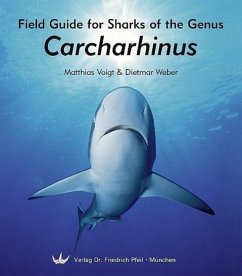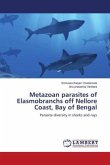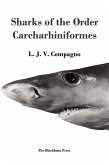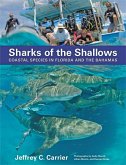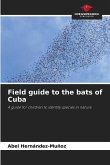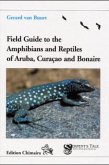All known and relevant data and features to enable an identification of sharks of the genus Carcharhinus (BLAINVILLE 1816) are summarised and visualised in this book. The introduced species are difficult to separate for somebody who is not experienced in identifying sharks. An identification key is given to determine and to differentiate the species. For each species an extended list of characters is given including coloured figures to show the lateral and ventral view, a detailed view of nostril and teeth, and in some cases of juveniles and special characters. Further, data on body size and appearance, colouration, tooth formula and shape, numbers of vertebrae, on other internal and external characters, the geographical distribution, preferred habitat and food spectrum are presented. In addition, biological and reproductional data are included, e. g. number of young per litter, size at birth, size at sexual maturity, as well as behaviour and migrational patterns.
Most of the previous works about Carcharhinus listed and discussed a maximum of 30 species. In contrast, this field guide describes 33 species, six species with special notes of the authors. Further, a possible subdivision of the spinner shark, C. brevipinna, in an Atlantic and Pacific subspecies is briefly discussed. An almost unknown species, C. acarenatus, formerly considered a synonym of C. brachyurus, is introduced. A very rare species, C. leiodon, which was hitherto recorded only once by GARRICK (1985), is included and controversially discussed. Another species in dispute, Carcharhinus sp. A, mentioned by COMPAGNO et al. (2005) as new member of the genus, is comprised and discussed.
Hinweis: Dieser Artikel kann nur an eine deutsche Lieferadresse ausgeliefert werden.
Most of the previous works about Carcharhinus listed and discussed a maximum of 30 species. In contrast, this field guide describes 33 species, six species with special notes of the authors. Further, a possible subdivision of the spinner shark, C. brevipinna, in an Atlantic and Pacific subspecies is briefly discussed. An almost unknown species, C. acarenatus, formerly considered a synonym of C. brachyurus, is introduced. A very rare species, C. leiodon, which was hitherto recorded only once by GARRICK (1985), is included and controversially discussed. Another species in dispute, Carcharhinus sp. A, mentioned by COMPAGNO et al. (2005) as new member of the genus, is comprised and discussed.
Hinweis: Dieser Artikel kann nur an eine deutsche Lieferadresse ausgeliefert werden.

